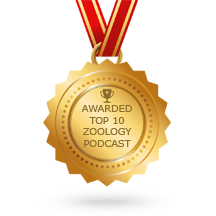Browsing the "Mesozoic" Category
The Mesozoic era, meaning “middle life”, is a division of earth’s history spanning from around 252 to 66 million years ago. It is subdivided into the Triassic, Jurassic and Cretaceous periods. The beginning of the Mesozoic is characterised by a long phase of recovery following the end Permian mass extinction. The end of the Mesozoic is marked by the Cretaceous/Paleogene extinction event which wiped out the dinosaurs among other groups.

Published on December 28th, 2019 | by Guest Blogger
Of the many countries around the world that have seen palaeontologists scouring their strata for fossils, Mongolia is one of the most intriguing and inspiring. Landlocked and sandwiched between its neighbouring geographical behemoths, Russia and China, [&hellip... Read More →

Published on November 15th, 2019 | by Liz Martin-Silverstone
Australia has many fossils from all ages, including several dinosaurs known exclusively from this time and place. However, they are not well known for their pterosaur fossils, having only a handful of specimens, and up to [&hellip... Read More →

Published on October 21st, 2019 | by Guest Blogger
We don’t need a whole lot of fossil material to start to understand the ecosystems of the past. A few teeth can tell us what types of dinosaur roamed the land hundreds of millions of years [&hellip... Read More →

Published on September 22nd, 2019 | by Guest Blogger
The recent discovery of a dinosaur trackway site on the Isle of Skye, Scotland, provides insight into “a day in the life of a bunch of dinosaurs just loitering about, 170 million years ago” according to [&hellip... Read More →

Published on July 1st, 2019 | by David Marshall
Fossilisation of organic material was long thought to result in the complete loss of original content. However in the last 20 years, several high-profile publications reported the discovery of proteins, blood vessels, blood cells and even [&hellip... Read More →

Published on May 28th, 2019 | by Guest Blogger
As with most children who are fascinated by dinosaurs, Tyrannosaurus, Triceratops, and Stegosaurus were amongst the first dinosaurs I learnt of. But as I grew older, another group of dinosaurs began to pique my interest, a [&hellip... Read More →

Published on January 1st, 2019 | by David Marshall
Decapods are a group of crustaceans that include such well-known families as crabs, lobsters and shrimp. Whilst crustaceans are known from as early as the Cambrian, we don’t see the first decapods until Devonian. Over the [&hellip... Read More →

Published on June 23rd, 2018 | by Chris Barker
If you’ve been on twitter these last few months, or follow palaeozoologist Darren Naish on social media, you’ll have surely heard about the new book written by Brian Ford, “Too Big to Walk: The New Science [&hellip... Read More →

Published on June 7th, 2018 | by Guest Blogger
Whenever we think about extinct animals we often imagine them tucking into their favourite meals, whether it be a Tyrannosaurus rex munching on a Triceratops steak, or a woolly mammoth enjoying an Ice Age salad. But [&hellip... Read More →

Published on May 30th, 2018 | by Liz Martin-Silverstone
Squamates are a group of reptiles that include lizards and snakes, with the earliest fossils occurring in the Jurassic, despite molecular studies dating the group back to the Triassic. The study of their origins has been [&hellip... Read More →






















